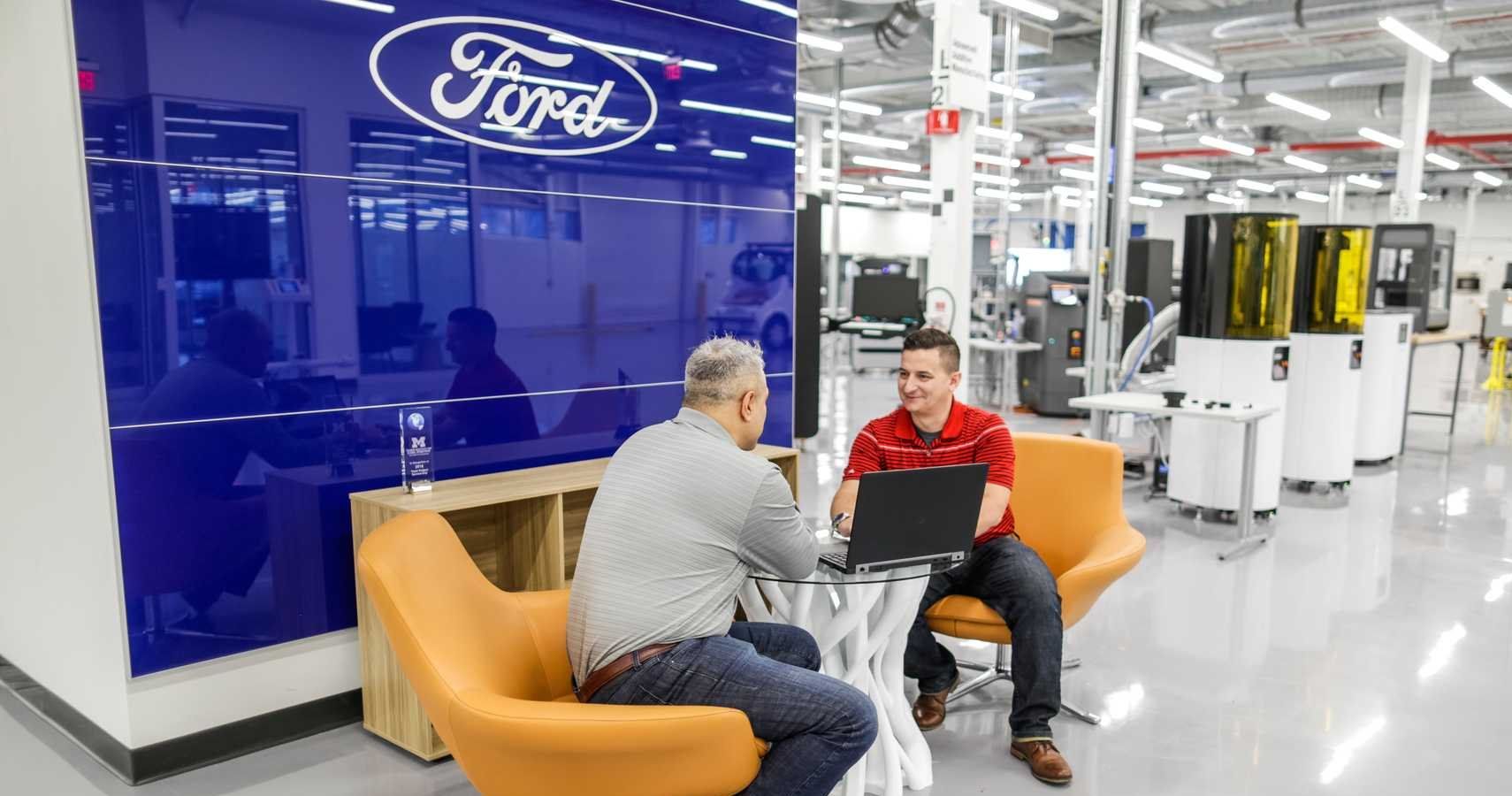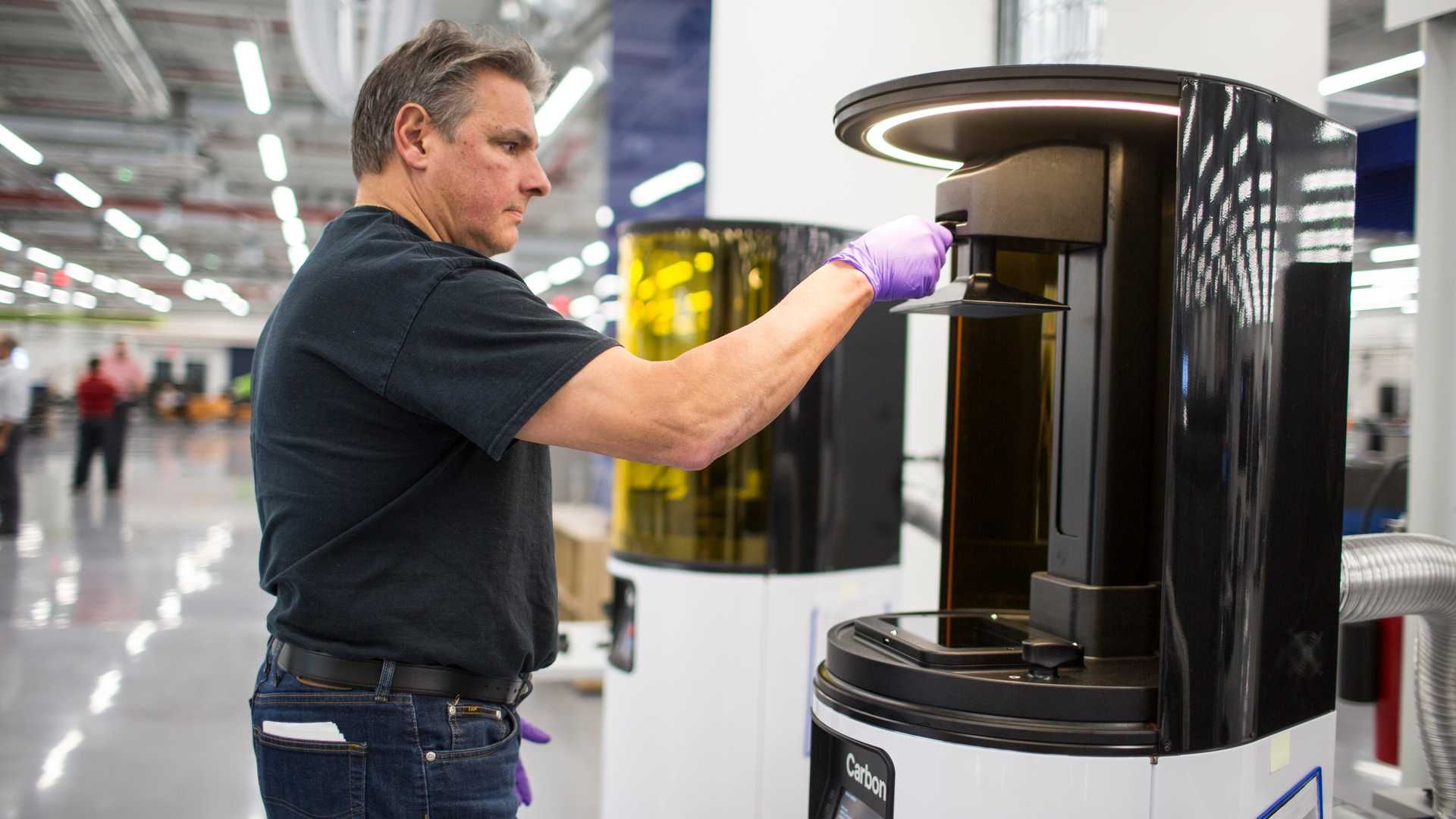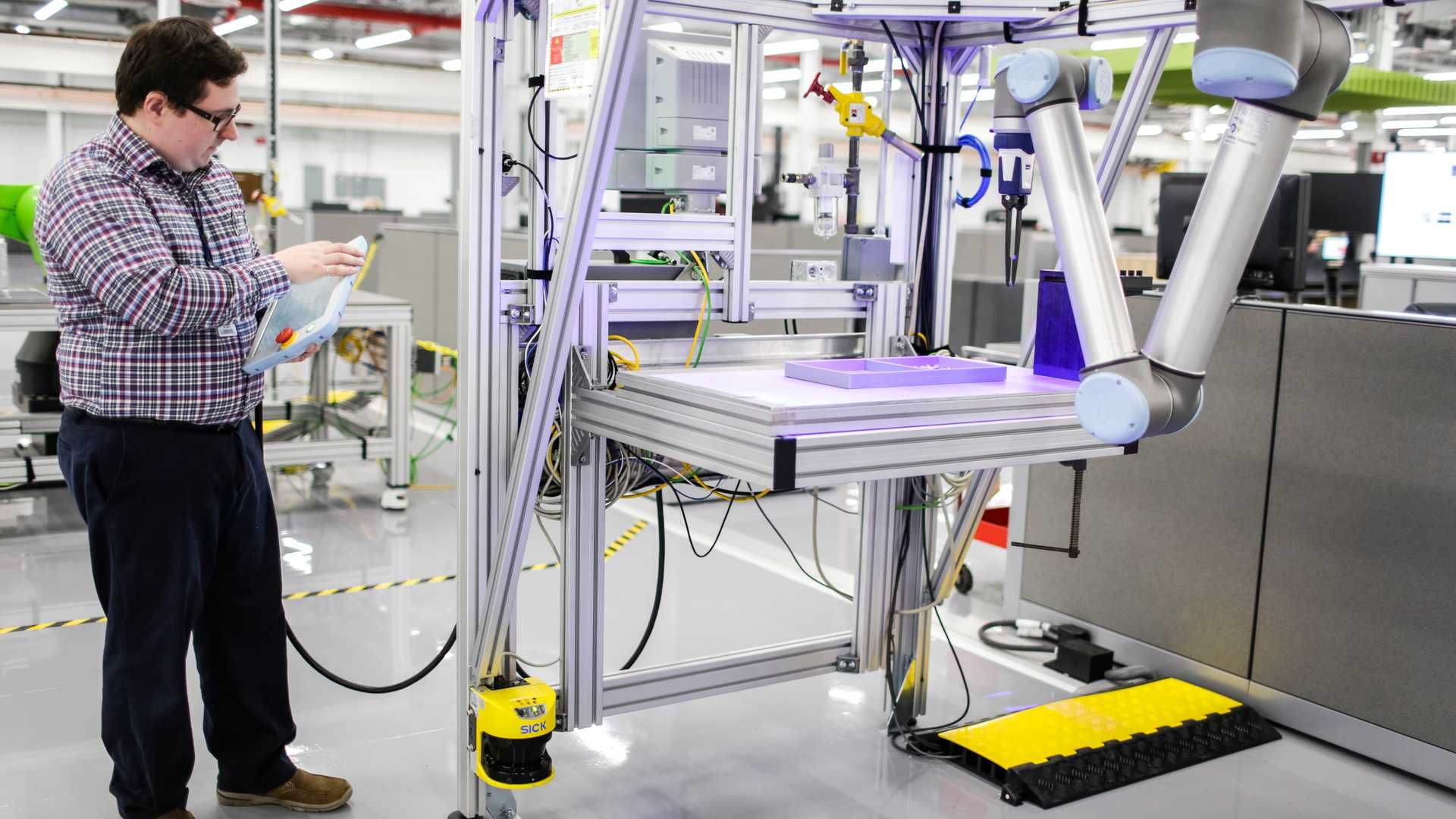Ford is making 3D printed parts for their production vehicles, including two parts for the upcoming Shelby Mustang GT500.
Deep in the heart of Michigan lies a top-secret facility belonging to Ford. There, all sorts of new technologies, including virtual reality, 3D printing, and advanced robotics are tested and developed to make new and better ways to manufacture Ford vehicles.
OK, so it’s not exactly top secret. We’re sure Ford won’t just let anyone walk inside, but if they’re sending out press releases that tell you the building is called the Advanced Manufacturing Center and that it’s located in Redford, Michigan, it can’t be all that classified.
Among the many fancy pieces of tech that Ford has at the Advanced Manufacturing Center are 23 3D printing machines. Also known as “additive manufacturing” machines, a 3D printer works a lot like a regular printer, only the toner is replaced by some sort of material that can be melted and placed layer upon layer.
Most of us are familiar with the simple plastic 3D printers that can be used to build all sorts of neat things, but larger, more expensive units can 3D print with metals like titanium or aluminum. Either of these materials is quite useful for automotive construction.
Take the Shelby Mustang GT500. Although we still haven’t seen the full car in the flesh, Ford assures us that two components of the GT500’s brakes are actually made using 3D printers. We suspect they won’t be made of cheap plastic, but you never know. Ford might have a clever reason to need something that’s as light and durable as plastic.
RELATED: CHECK OUT THIS STRANGE LOOKING 3D PRINTED TITANIUM WHEEL
Not only does Ford make 3D printed parts, they can also make specialized 3D printed tools. The new Ford Ranger received 5 specialized tools to help in its manufacture, which Ford says cut weeks off the Ranger’s production time.
It’s not just 3D printing that Ford uses in making new cars. They also use virtual reality headsets--the same kind used in video games--to perform virtual walkthroughs of their assembly lines to see if they can spot any problems before construction. And they’re also making smaller, smarter robots called “cobots” (which stands for COlaborative roBOTS) to make manufacturing easier and safer for workers.
As cool as this all is, we’d still prefer to see a working GT500. Sadly, we’ll have to wait until next year’s Detroit Auto Show for more Mustang goodness.



